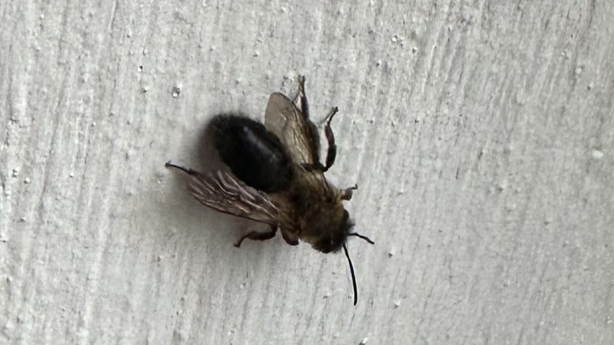To listen to RTÉ.ie's radio and podcast services, you will need to disable any ad blocking extensions or whitelist this site.

0
00:00
00:00
Episode Notes
Panel: Richard Collins, Éanna Ní Lamhna & Niall Hatch
Reporter: Terry Flanagan
Researcher: Michèle Browne
In addition to listening to us on RTÉ Radio One at 22:00 every Monday night, don't forget that you can also listen back to each of our programmes any time you like at https://rte.ie/mooney. There, you will find an extensive archive of past broadcasts, conveniently split into different topics and segments.
Tonight’s programme features a fascinating interview with Aoife Nic Giolla Coda of the Native Irish Honey Bee Society. With that in mind, our recommendation from the Mooney Goes Wild archives this week is a special documentary about our deeply missed friend, the late, great Philip McCabe, widely known as "The Beeman", who for many years was our resident bee expert on the programme and rose through the ranks to become worldwide President of Apimondia, the International Federation of Beekeeper's Associations. In this special programme, which was first broadcast in August 2017, we visit the places and people who influenced the charismatic Monaghan man.
To listen to this documentary from the Mooney Goes Wild archives, visit
https://rte.ie/radio/radio1/clips/21225340/
Should we eradicate mosquitos and wasps?
Listener Michael Robinson of Portrane, Co. Dublin was watching Derek’s Back from the Brink programmes on RTÉ One recently and decided to write in to Mooney Goes Wild with a question. Back from the Brink showcased the efforts of conservationists across Europe to saver threatened species, and Michael agrees that humans should not make wild creatures extinct . . . bit wondered whether we might make exceptions in the cases of mosquitos and wasps.
Michael’s argument is that some species of mosquitos cause many human deaths due to malaria, while some species of wasps can give painful stings. Why not eradicate them? Derek put this question out to our panel, and a colourful and impassioned discussion followed.
For more information about mosquitos in Ireland, visit
https://hse.ie/eng/services/list/1/environ/mosquito/
For more information about the Common Wasp in Ireland, visit
https://irelandswildlife.com/common-wasp-vespula-vulgaris/
To watch the latest series 4 of Back from the Brink on the RTÉ Player, visit
https://rte.ie/player/series/back-from-the-brink/10001699-00-0000?epguid=IH10004820-24-0002
Questions from listeners

Here at Mooney Goes Wild we receive lots of queries from you, our loyal listeners. Our experts do their very best to answer as many of them as possible, mostly off-air, but some of the most interesting ones feature on our programme.
On tonight’s programme, our Researcher Michèle Browne pops into studio to put some of these wildlife queries to our panellists:
·Olivia McGill was in touch to say that she was in Djouce Woods in Co. Wicklow recently, where she took a photo of a coniferous tree with what appeared to be red berries on it, looking very like raspberries. As Éanna tells us, the tree in question is a Noble Fir (a non-native species that is frequently grown commercially for the Christmas tree market) and the "berries" are in fact the male catkins of the tree, which produce the pollen that the tree uses to reproduce.For more information about Noble Fir trees, visit https://en.wikipedia.org/wiki/Abies_procera
·Lisa Quinlan sent us a charming photo of a bumblebee that she discovered fast asleep in a flower in her garden. This is something that these bees sometimes do, after a hard day’s work collecting pollen.For more information about Irish bumblebees, visit https://biodiversityireland.ie/identifying-irish-bumblebees/lesson.html
·Mary Rose, who lives near Shillelagh in Co. Wicklow, contacted us to say that she has heard several male Cuckoos singing in woodlands along the Wicklow Way. Were they looking for females, she wonders? Another listener, Bernie, also wrote to us about Cuckoos, asking whether it is unusual to hear them singing at night.As Niall and Richard explain, the Cuckoos were indeed trying their best to attract females; as many females as possible, in fact. That is the whole point of their familiar song. So important is this to them that they will indeed sing at night, so that is not an unusual occurrence.For more information about Cuckoos in Ireland, visit
https://birdwatchireland.ie/birds/cuckoo/
Ireland’s native honeybees

Last week saw the celebration of World Bee Day. The aim of this annual observance is to highlight the essential role that bees and other pollinating insects play when it comes to global food security, supporting biodiversity and providing ecosystem services.
Ireland is home to 100 species of bee, one of which is the native Irish Honeybee, Apis mellifera mellifera, a form of bee which was once thought to be extinct but which is still managing to cling on, despite the introduction to Ireland of a now-widespread domesticated variety of honeybee called the Buckfast Bee.
On tonight’s programme, Éanna speaks to Aoife Nic Giolla Coda, owner of Galtee Honey Farm in Co. Tipperary and co-founder of the Native Irish Honey Bee Society. In the course of a fascinating conversation, Aoife tells us about the efforts underway to save Ireland’s native honeybees, the unique adaptations that make them so suitable for life in Ireland and the long-standing tradition of informing honeybees about deaths in the family.
For more information about Galtee Honey Farm, visit
For more information about the Native Irish Honey Bee Society, visit
A mysterious insect

We recently received an email from regular listener Aileen McGowan. Aileen has had a number of insects entering the house. She wasn’t sure if they were bees or wasps, and also wanted to know if they were "good or bad" insects, so she sent us a few photos in the hope that one of our experts might be able to provide some answers.
We duly dispatched our roving reporter, Terry Flanagan, to meet insect expert Dr. Hugh Feeley in order to find out. Hugh is a member of Insects/Invertebrates of Ireland, a Facebook page where you can send photos for identification. Very quickly, he identified the insect in question as a Chocolate Mining Bee, and on tonight’s programme he tells us all about them.
For more information about the Chocolate Mining Bee, visit https://irishnaturalist.com/bees/chocolate-mining-bee-andrena-scotica/
To join the Insects/Invertebrates of Ireland Facebook group, visit
https://facebook.com/groups/insectsinvertebratesire/
If you have a wildlife query for our experts, you can email us at mooney@rte.ie.
Looking forward to our Mooney Talks feature
Last month, we recorded a very special series of short natural history lectures at University College Cork, given by leading UCC academics and Mooney Goes Wild team members, shedding new light on some amazing species and environmental initiatives, all introduced by Derek Mooney and Prof. John O’Halloran, President of the university.
This was all for a new series we are calling Mooney Talks, which will be broadcast and released as podcasts later this year. To whet your appetite, tune in at 15:00 on Bank Holiday Monday for a special feature about this new series, encompassing extracts from all of the lectures and featuring interviews with our presenters.
